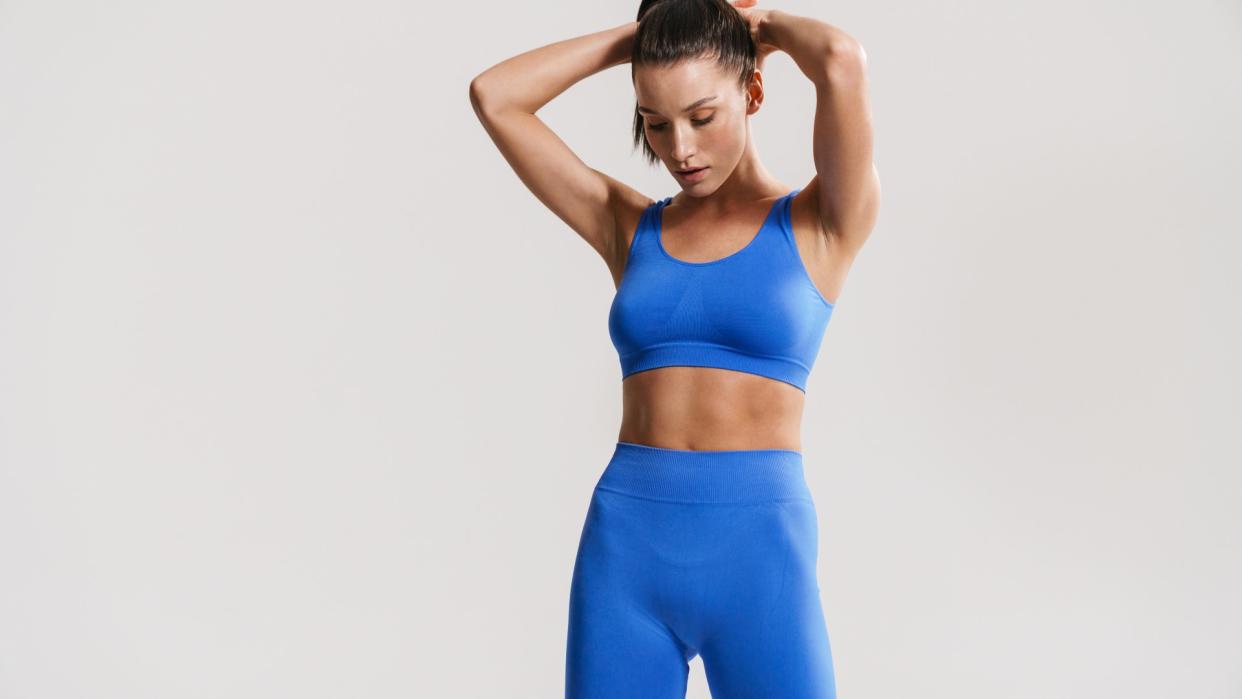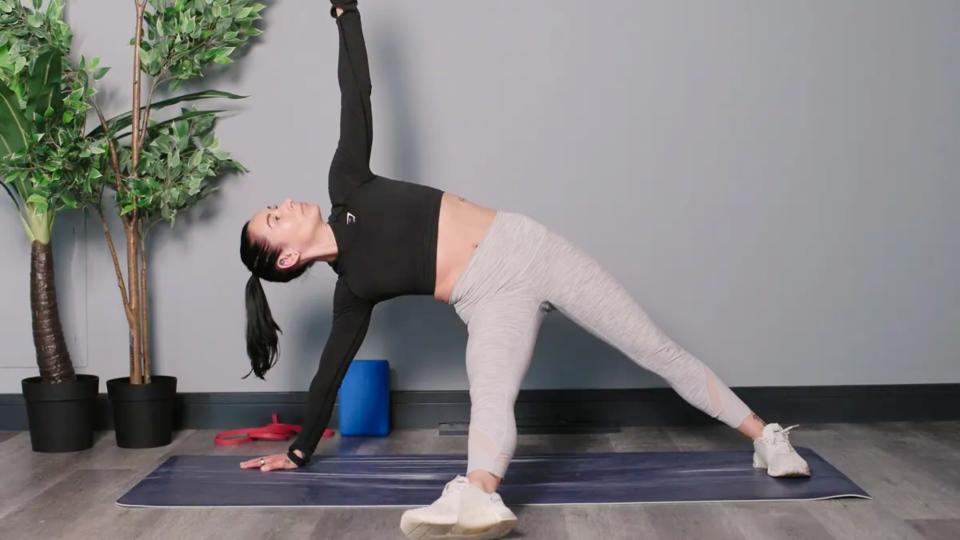I did 5-minute starburst planks every day for one week — here’s what happened

I first came across starburst planks during a hot yoga class months ago, and I’m surprised at how little-known the plank variation still is.
The starburst plank involves transitioning from plank to side plank as you step one leg across the body and raise the opposite arm into the air. If you’re currently figuring out the logistics in your head, don’t worry, because I provide a detailed how-to below.
I tried 5-minute starburst planks every day for one week to see how my side plank game compared to the various other TG plank challenges our team has indulged in over the past year. If you’re intrigued, read on to find out what I learned.
What is the hardest form of plank?
It’s subjective, but the straight-arm plank is considered more challenging than the forearm plank, recruiting more of the upper body muscles like the anterior deltoids (shoulders), arms (triceps and biceps), forearms and wrists to maintain the position.
Moving variations like commando planks and twisting motions (think plank hip dips) are also more advanced options you can try; any rotational movement recruits the external and internal oblique muscles that run down your waist, so if you want to encourage 360-degree torso engagement, add these to your ab workouts.
How to do the starburst plank

We recommend one of the best yoga mats for home exercise if you plan to try this yourself.
How:
Start in a high plank position with your shoulders stacked over your wrists and hips aligned with your shoulders
Brace your stomach, glutes and quads to create tension through your torso — the power center for planks
Step your right leg across your body and place the outer foot just outside of your yoga mat
At the same time, extend your left arm toward the ceiling, reaching tall with your fingertips
Hold the side plank position, stacking your arms into one straight line
Press your hips upward and keep your right leg straight
For an advanced variation, try lifting your right leg away from the ground
Hold. Reverse these steps back to high plank, then change sides.
I did 5-minute starburst planks every day for one week — here’s what happened
It's an oblique-torching plank exercise
I find starburst planks cropping up regularly during yoga classes, but surprisingly, the move isn’t widely shared across fitness circles. Or not under the same name, anyway.
The move targets your shoulders, arms and wrists, engages muscles in the chest and back, strengthens your core and targets the hip flexors, glutes and legs. There’s also a delicious stretch for the chest, shoulders, waist, outer glutes and thighs.
I feel the starburst plank mostly down my waist, which you can capitalize on if you keep both hands pressed into your mat and your chest parallel to the floor, maintaining a plank position while extending your leg across the body.
Five minutes felt like a lifetime
Being asked to hold a plank for any length of time gets a big sigh from my clients, and now it was my turn. I opted for 30 seconds per side for five rounds, totaling 5 minutes. Enough to build a burn without overloading my muscles too much, particularly my shoulders.
If you plan to try starburst planks, don’t use 5 minutes as a standard; build slowly and choose a timecap that works for you. Balancing in a side plank considerably loads one side of the body, building strength in the stabilizer muscles and improving balance, coordination and overall stability. However, anyone with weak shoulders should consider starting slowly.
I found it helpful to send my gaze toward the ceiling, specifically, the tops of my fingertips. Others might prefer to start with the gaze downward while building foundational side plank strength.
I switched things up — and suffered for it
About halfway through the week, to keep things interesting, I practiced hovering my outstretched leg away from the ground. My core, hips, glute and leg muscles began to tremble, and my supporting shoulder and arm burned. Like, seriously burned.
I kept my chest forward while wobbling through the minutes, trying not to fall over. On a few occasions, I attempted to grab my lifted foot with the opposite hand with varying degrees of success.
Only try this if you’re confident with starburst planks already, as it’s a considerable test of mobility and flexibility, especially around the hips and hamstrings, and check your supporting arm stays straight with your shoulder stacked directly over the wrist.
I didn’t notice much difference — but my core was sore
I struggle with side planks, but I enjoyed dedicating a week to starburst planks, helping to develop my confidence with balancing on one arm. Unsurprisingly, after one week, my glutes, shoulders and core muscles felt sore, but I felt mostly the same.
Verdict
I urge anyone taking on challenges like this to manage expectations around body composition — a week of planks does not a six-pack make, especially as muscle definition results from low body fat percentage and muscle growth. If fat loss is your goal, I recommend reading up on why you can’t see your abs yet despite working out, where we explain just how important your lifestyle is.
Most importantly, I recommend practicing planks to strengthen your core, which consists of superficial (external) and deeper internal muscles responsible for safe movement and stabilization. A strong core supports posture and mobility and helps you lift and run more efficiently.

